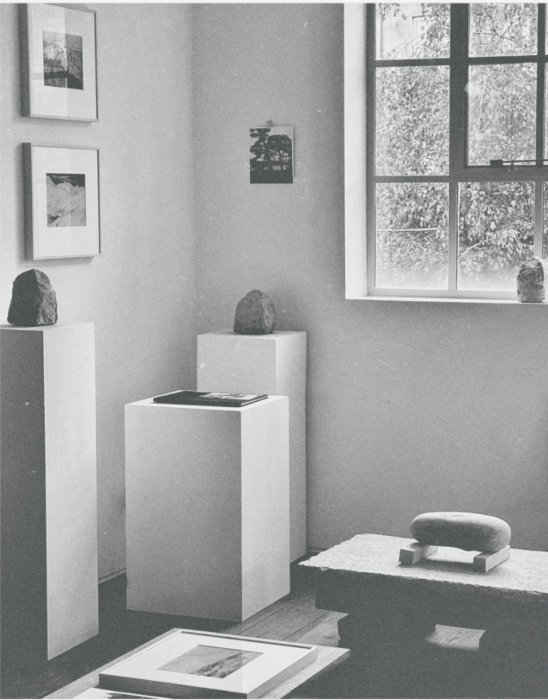
Studio Open Days by Appointment (Oct. – Nov. 2025)
Emery is opening her East London Studio for a series of informal visits, a setting for conversation and exchange around new works and projects in progress. Visits are limited and by appointment.
Enquiries: info@lenaemery.com
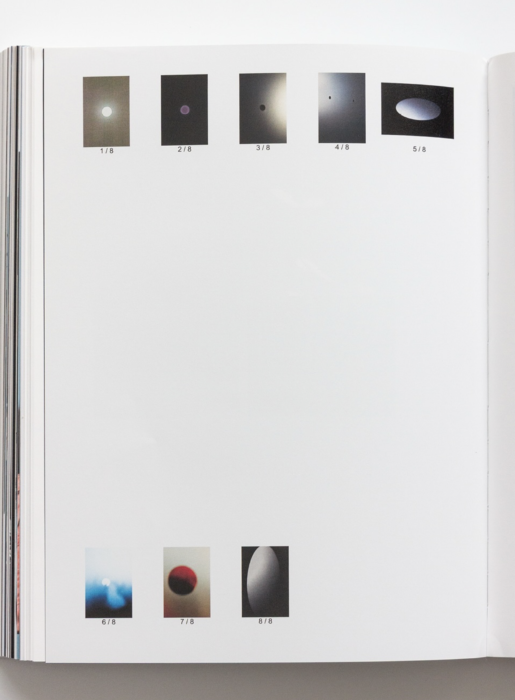
Interview and Portfolio inside the Jeux D’Eau issue of Noisé Magazine
Lena C. Emery’s (@lena_c_emery) work is shaped by movement—across landscapes, mediums, and the unseen currents of memory and time. Raised between continents and islands, she learned to navigate the fluidity of identity, the tension between rootedness and detachment. This duality is embedded in her practice: photography, writing, and installation become ways of tracing what is disappearing, what remains, and what lingers in between. Her images are quiet, yet they hold weight. A glacier wrapped in fabric, a nude body stripped of its prescribed meaning, the delicate balance of nature confronting its own unraveling, her work does not demand but invites, not to impose a singular narrative, but to open a door. Whether examining the fragile bond between humans and nature or challenging how we have been conditioned to see, Lena’s art is a process of revealing—peeling back layers, dissolving boundaries, and asking if we are truly paying attention. – Interview by Tang Siyu @_tangsiyu_

‘LENA C. EMERY: The Mountains Between Us’ opens at FRIEZE 25th of April 2024
Weaving together photography, video and sculptural objects, Lena C. Emery highlights the accelerated loss of mountain glaciers and the desperate conservation efforts currently employed to impede their decline. Under the continued influence of greenhouse-gas forced global warming, ice that took centuries to develop is vanishing in just a number of years. A fate experts predict for at least two-thirds of all glaciers by the end of this century.
EMERY: ‘The Mountains Between Us’, captures the current environmental efforts undertaken to reduce the rate at which glaciers melt. Glaciers have held space for centuries, silently bearing witness to history. They’ve seen the world change in ways we can barely comprehend. Because my grandfather spent his life in these mountains, watching this particular glacier retreat and form lakes where there was previously only ice and at a pace that’s steadily increasing, feels deeply personal. The idea of covering these mammoths in fabric to stall the inevitable, feels both tragic and emblematic of our relationship with nature: The magnitude of loss countered by gestures that, though earnest, feel powerless. Visually these wrapped peaks evoke images of muddied tents, makeshift shelters that we’ve come to erect for those displaced by upheaval. This fragility, their fragility, our fragility, is a direct reflection of the imbalance we have sown, where those least responsible for ecological destruction are forced to bear its heaviest burdens. The title became a way to frame those divides. Mountains have always symbolised barriers, but perhaps they could also be reimagined as thread, shared histories and a collective belonging. The elemental particles composing our very being once danced amidst these ancient landscapes and if they disappear, part of us does too.
In my work, I’m asking how we can move forward, how the mountains between us might become points of connection rather than barriers, linking us to one another and to the earth itself. It’s about honouring what’s being lost while imagining new ways to stay connected to the natural world, even as it changes.
Held in support of ClientEarth and sponsored by Tekla. To hear more about ClientEarth’s urgent campaign actions, events, and other ways you can support their work, visit clientearth.org
FRIEZE No. 9 Cork Street, London W1S 3LL
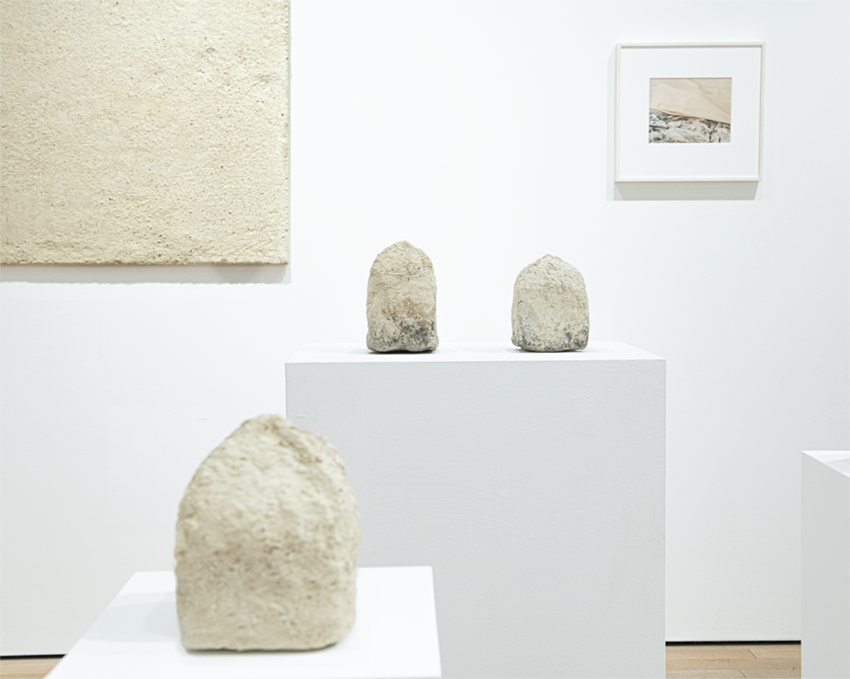
Emery’s installation at FRIEZE No9 Cork Street Gallery, carves out an intersection between environmental stewardship and artistic expression
Lost Bodies features honed glacial boulders, referencing glacial erratics—boulders that glaciers transport across landscapes before depositing them in unexpected places as they recede. These stones, often vastly different in composition from the local geology, serve as metaphors for displacement and resilience in the face of natural forces. The term “erratic” comes from the Latin “errare,” meaning “to wander,” which speaks to the journey of these rocks across distances.
Emery draws parallels between the physical displacement of these stones and the upheaval experienced by human communities impacted by climate change. This connection between natural and human migration underpins the work, pays tribute not only to Earth’s glacial past but also to the narratives of resilience and survival in the face of loss.
In Future Relics, Emery fuses salvaged granite remnants with a special type of lime, which naturally absorbs CO2 from the atmosphere as it hardens. The sediment covered rocks mimic moraines—the accumulations of rock and soil carried and deposited by moving glaciers while underscoring the potential of traditional materials for sustainable solutions to today’s environmental challenges.

A female sperm whale is seen playing, nursing, and traveling with her young off the coast of Dominica in Emery’s documentary vignette THEIR OCEAN.
Created in partnership with @Atmos and launched together with @Parley.tv in an effort to advocate for expanded marine protected areas. Watch on youtube: THEIR OCEAN

Emery travels to Dominica to document Ocean Giants for Atmos Vol. 11
In November 2023, Dominica announced the creation of a 788-square-kilometer Sperm Whale Reserve along its western coast. This reserve aims to protect its resident sperm whale population, bolster biodiversity, and contribute to climate resilience by sequestering carbon. The initiative also seeks to boost the local economy through sustainable tourism and marine research opportunities.
“In their presence, the vastness of the sea feels unexpectedly intimate and you come to understand that these whales carry not just their own stories, but the memory of the ocean itself, complex, resilient, and deeply intertwined with our own survival.”

Portfolio and in-depth interview inside noisé 05 – Jeux d’eau
noisethemagazine brings together voices and visions that explore transformation, across time, memory, and form.
Editor-in-Chief tangsiyu interviews Emery: “Lena’s work is shaped by movements – across landscapes, mediums, and the unseen currents of memory and time. Raised between continents and islands, she learned to navigate the fluidity of identity, the tension between rootedness and detachment. This duality is embedded in her practice photography, writing, and installation become ways of tracing what is disappearing, what remains, and what lingers in between. Her images are quiet, yet they hold weight. A glacier wrapped in fabric, a nude body stripped of its prescribed meaning the delicate balance of nature confronting its own unraveling. Her work does not demand but invites, not to impose a singular narrative, but to open a door. Whether examining the fragile bond between humans and nature or challenging how we have been conditioned to see, Lena’s art is a process of revealing – peeling back layers, dissolving boundaries, and asking if we are truly paying attention.”

Emery journeyed to the Arctic to document the Arctic’s increasingly delicate ecosystem for Atmos
My work is driven by the recognition that our futures are intertwined with these vanishing landscapes and as we continue to burn fossil fuels, we hasten their disappearance, and with them, we also lose a part of ourselves.

Lena C Emery designs a series of furniture and objects as part of THE OIHARA RESEARCH PROJECT
TORP is an initiative exploring ways to reintegrate nature and natural materials into daily life through functional objects and plant-based practices. There is an emerging consensus that the health of the planet depends on the coexistence between rapidly growing cities and the natural world, yet few frameworks or tools are being provided to allow those living in cities to incorporate nature within their encapsulated lives.

Gucci’s art anthology ‘Prospettive Ancora Londra’ by @sabatods, @charleneprempeh and @lewisdaltongilbert , features artwork by Tracey Emin, Martin Parr, Francis Bacon, Wolfgang Tillmans and Lena C. Emery

Emery shines a light on our underwater world inside Atmos Vol 9
In 2023, Emery created a portfolio of over 100 underwater photographs documenting Wakatobi National Park, a UNESCO World Biosphere Reserve in Southeast Sulawesi. The project highlights the importance of well-regulated marine protected areas and reflects over two decades of collaborative conservation that have made Wakatobi home to the world’s highest diversity of reef and fish species.
In the mid-1990s, Emery’s father co-established Wakatobi Dive Resort and its Reef Conservation Program, which transformed six kilometres of reef into a no-fishing sanctuary. The initiative set a precedent for community-led, rights-based conservation and led to the government’s 2002 expansion of the park to 1.39 million hectares. Wakatobi’s success underscores the ecological value of protected marine zones — vital systems that sustain biodiversity, regulate climate, and generate the oxygen on which all life depends.
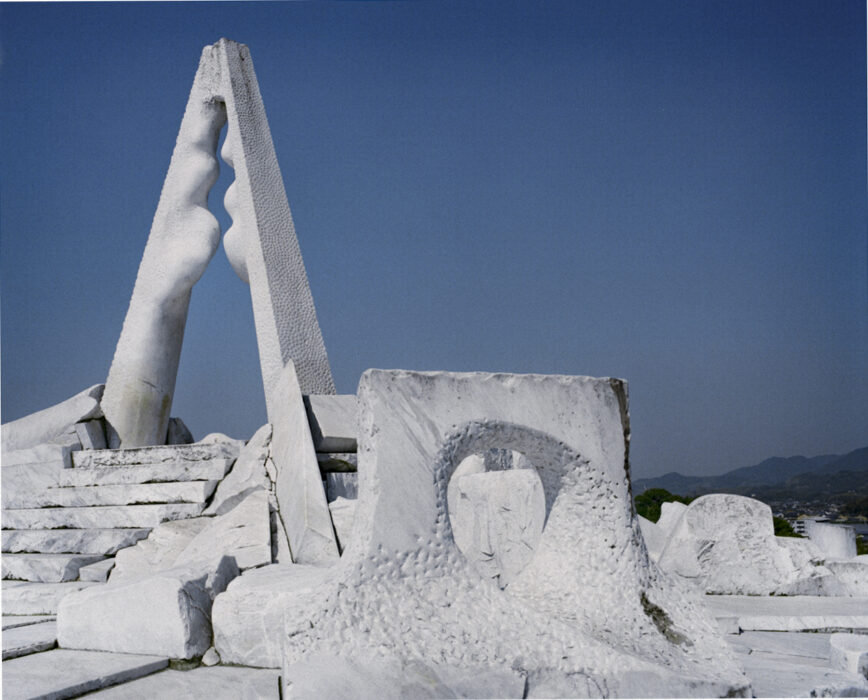
An interview and excerpt from Emery’s photographic series ‘Tenchi’ featured within IFLA
The new Special Edition of IT’S FREEZING IN LA! (@itsfreezinginla) addresses how mainstream photographic coverage of the climate crisis is failing to convey the issue in all of its nuance and complexity. Instead, we need new narratives and perspectives that can inspire and facilitate sustainable activism. We need stories that peel back the dense layers of the problem, highlight some of the solutions, and, crucially, envision more positive future. Text by Daniel Milroy Maher.
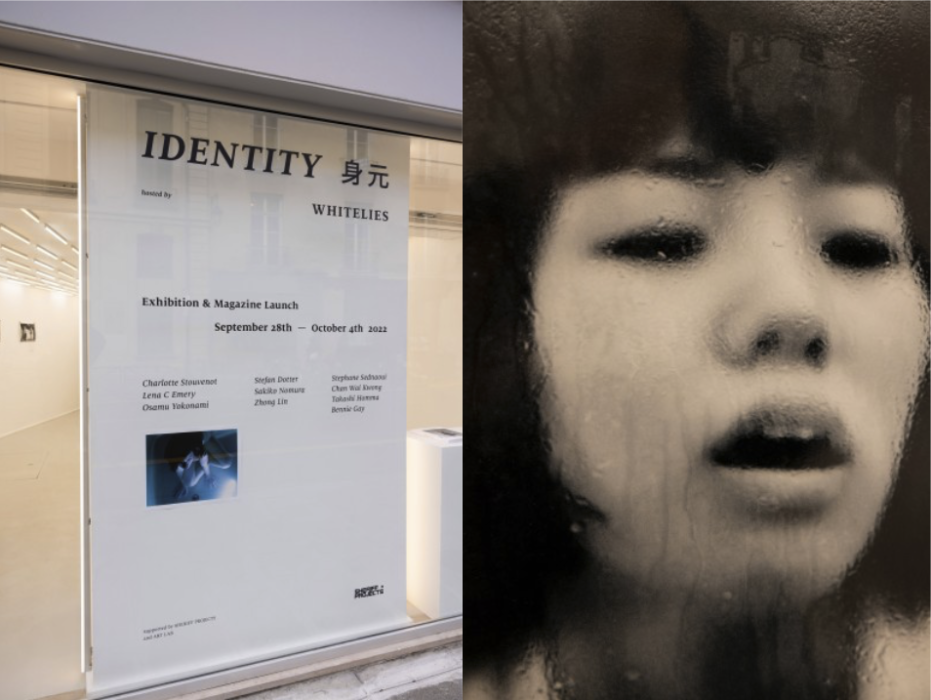
Emery’s work on show in exhibition IDENTITY at Sheriff Gallery, Paris, curated by Whitelies Magazine
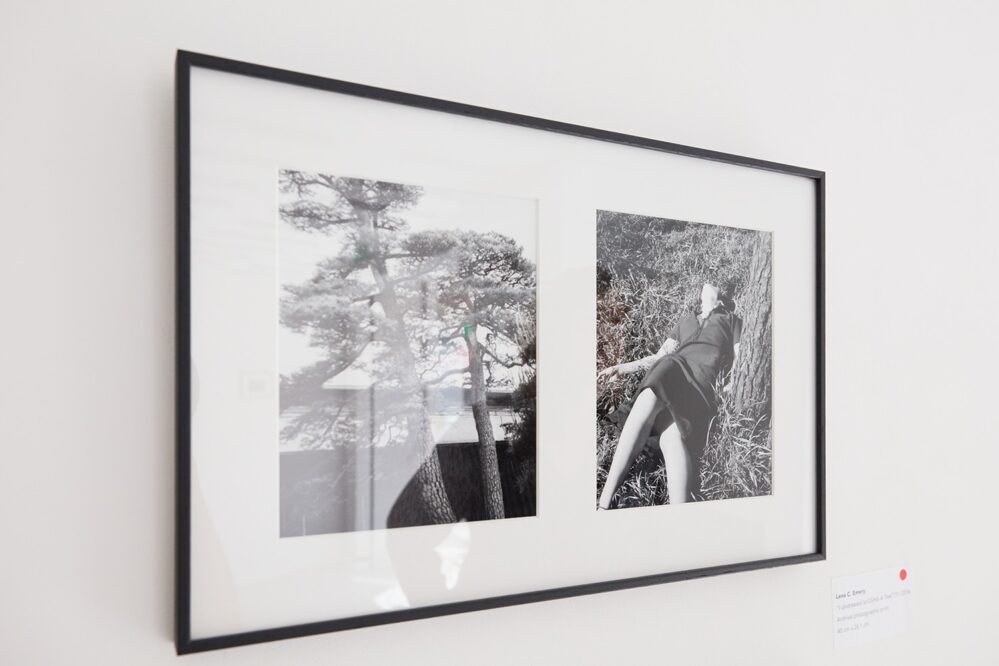
Lena C. Emery takes part in Group Exhibition in benefit of the Canopee Association and Now you see me Moria
Showing as part of a of philanthropic, ecologically engaged group exhibition at Sheriff Gallery, curated by Sophie Strobele, ‘MORIA‘ unites a striking body of artworks, visually manifesting the significance and sacredness of trees. Challenging anthropocentrism viewpoints, ‘MORIA’ celebrates trees as symbols for symbiosis and collaboration; acknowledging their sensory abilities, communication skills, climatic influence, and spiritual power.

Emery’s photographs in ‘Posturing: Photographing the Body in Fashion’ an exhibition and book curated by Shonagh Marshall and Holly form part of a new movement in contemporary fashion photography

A winner of the Decade of Change Award, Emery exhibits at the Hong Kong Museum of Climate Change as well as the Nest Summit New York
Her work The Future of Fungi: Fungi Our Future explores the overlooked role of fungi in shaping a sustainable future. Among Earth’s oldest life forms, fungi form vast underground networks that sustain ecosystems, absorb carbon, and aid in medicine, agriculture, and pollution cleanup. Despite their immense potential, habitat loss and industrial practices threaten their survival. Emery’s work calls for a renewed awareness of fungi as vital allies in restoring ecological balance and envisioning a more symbiotic future.

Emery collaborates with Tekla in a visual study titled ‘Nocturnal Tides’
What was the intention behind the Nocturnal Tides’ black & white diptychs? EMERY: I keep asking myself, how can the ideas and images we produce form part of a larger conversation? Our biological clocks are connected to the natural earth rhythms and cycles – like the tide that draws in while the moon rises. So to create pairings that assume a relationship between human and nature as a living, elemental entity seemed like a felicitous way to represent the idea of sleep. As a format, the juxtaposition of the imagery encourages the viewer to create their own symbolic ties, while the intentional use of black and white allows for the necessary abstraction from reality: disrupting the existing visual brand language in order to forge a new, distinctive dialogue.
Is there a symbolic value you place on clouds and water? EMERY: The interconnection between water and clouds are a beautiful metaphor for the nature flow of existence. Their interdependent relationship reflects the notion of “inter-being” – an understanding that everything in the world co-exists and connects. The tide that ebbs and flows, rises to form clouds. Giant interstellar, molecular clouds that exist out in our cosmos, collapse to birth stars and planets. All the atoms inside of us are constantly moving and renewing. The symbolic value isn’t rooted in the idea of reincarnation but in biological theory. On a microscopic level, the molecules that make up our bodies have once been a part of clouds, mountains and oceans. I like to keep these connections and the concept of ‘interbeing’ in mind when I approach my work as they encapsulate the vast and boundless symbiosis which is present within all of nature and humanity.

Emery writes about the Future of Cities. shareing previously unpublished imagery inside Whitelies Magazine
Excerpt: As a teenager I came across the works of naturalist, artist and author Joy Adamson, who wrote: ‘Since we humans have the better brain, isn’t it our responsibility to protect our fellow creatures from, oddly enough, ourselves? Wildlife is something which man cannot construct. Once it is gone, it is gone forever. Man can rebuild a pyramid, but he can’t rebuild ecology, or a giraffe.’ At age 18 inspired by Adamson’s commitment to wildlife conservation I moved to a small island in Southeast Sulawesi, where my father had co-established a dive resort and marine reserve. At the time we were without internet or phone reception and only boat that came every two weeks to pick up and drop of guests and supplies. After two decades of collaborative conservation, Wakatobi is a UNESCO World Biosphere Reserve with the highest number of reef and fish species in the world. When I think of Adamson’s words, I think at once of our role as protectors as well as architects of the world we inhabit. Beyond re-adapting the way we design our built environments, we need to formulate a vision of a place where human concentration can exist within a framework that remains engaged and connected to the natural systems that allow it to thrive. Rather than thinking of cities as machines that echo man’s technological prowess, we should think of them as organisms within a larger ecosystem that acknowledge the rights of the natural landscape into which we insert them. By reconciling what our cities can afford us, we can inhale a bigger picture of the world and ourselves within it.
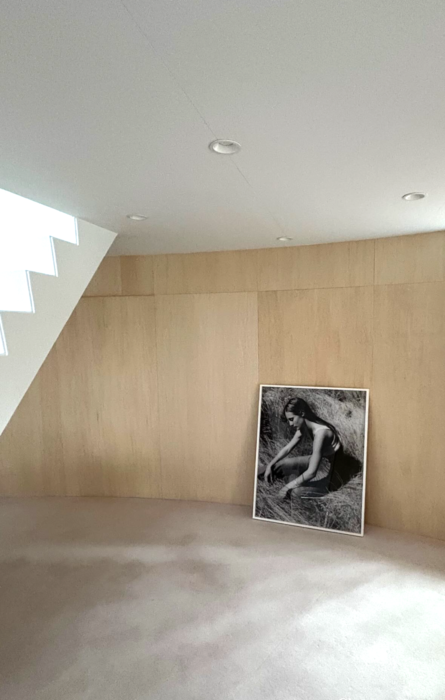
Emery’s visual collaboration with Tu Es Mon Tresor on show

A series of images by Lena C. Emery featured in Vanity Fair France.

Yuka & The Forest is available at Offprint Paris, November 7th – 10th 2019 with publisher Art Paper Editions

Kris Kozlowski Moore and Brad Feuerhelm review ‘Yuka & The Forest’
Our lives in the West are evidently powered by a paradigm of speed, but perhaps it is time to slow down. Yuka & The Forest by Lena C. Emery appears to do this. In the artist’s second book, we are introduced to the forests of Japan, more specifically those termed chinju no mori (sacred forests surrounding Shinto shrines). The book opens with a story written in the first person by Emery, poetically narrating a meditative walk that the photographs later illustrate. It is vivid, sensual prose that instills tranquility of mind, where talk of clouds as gentle giants, morning bird trills, tree spirits inhabiting twisting Japanese tree trunks and instances of meaningful touch between human and nature populate the passage. Importantly, Emery opts to at times uses Japanese words, melding her western thoughts with traditional language to underscore Japan’s harmonious relationship with nature whilst accentuating the remaining dichotomies between the East and West. In the West we are conditioned to consume, the forests around us identified, labelled and deconstructed as inanimate resources, a model of thought that conceals the harm it causes ourselves and the wider world. Yet Japan’s collective psyche towards the spiritual, psychological, medical and cultural value of the land has enabled them to preserve monumental areas of earth in its natural state. Because the preface echoes the visual narrative to come, it grounds us in the ideas that the work ultimately revolves around. It’s a precursor to the importance that Emery puts on the world. Read on here. (Kris Kozlowski Moore, heavycollective.com)
It somehow seems pertinent to have left this title too long to review having been caught in the deluge of books landing on my desk in a velocity that no longer seems sustainable. And sustainability is what we should be speaking about as fires rage through the forests of the Amazon. The lungs as it were, observed by the eyes of the collective body prepared to choke on a negative feedback loop for the price of a better burger. It depends on how we spin it I guess, but one cannot feel a profound dislocation these days from the environment and our place within it. “A culture that can instill the need for harmony and interdependence towards our natural environment within its people has the best chance for a sustainable future”. …reads the endpaper of Yuka & The Forest by Lena C. emery (APE) … In considering the metaphorical terms, it would be a shame to lose sight of the grandiosity of the images themselves. Make no mistake, the images of the forest and of Yuka are truly beautiful. Read on here (Brad Feuerhelm, American Suburb X)
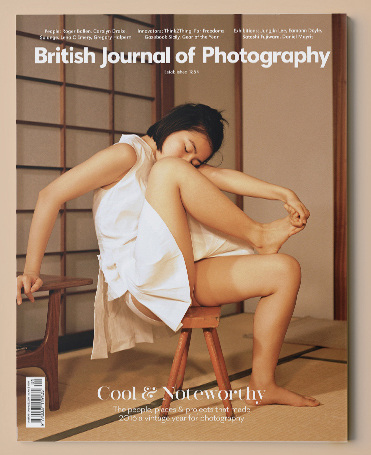
‘Rie’ selected within the Cool & Noteworthy January 2017 issue of the British Journal of Photography
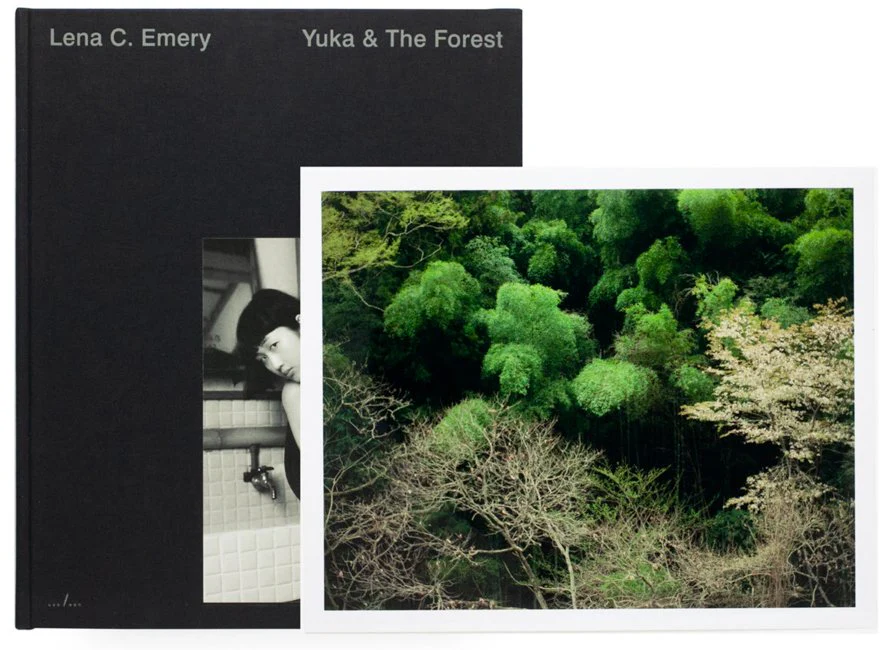
BOOK SIGNING ‘Yuka & The Forest’ Saturday, 2nd of March @Yvon Lambert, Paris
Come join us at Yvon Lambert for the signing of ‘Yuka & The Forest’ at 14 rue des Filles du Calvaire, Paris.
“A culture that can instil the need for harmony and interdependence towards our natural environment within its people has the best chance for a sustainable future”, reads the last page inside Yuka & The Forest, alluding to the success story that is Japan, where forests cover 67% of its total land area. Yuka & The Forest holds up the mirror to our intolerable, collective in-action in the face of the climate crisis. So pained by this reality, we have found ourselves paralysed, much like the book’s protagonist Yuka, who at the end of her journey contemplates: “Perhaps if only I had called after it (the hare, the guardian of the woods) in time, it could have warned the spirits, it could have pleaded with the kisetsu? Instead I stand silent and motionless; my mind burned by a vision of a forest that once stood so tall and then was gone.”
Printed on 100% recycled paper, 30% of proceeds were donated to the World Wide Fund For Nature, working in the field of wilderness preservation and the reduction of human impact on the environment.

Posturing: Photographing the body in fashion opens at Ground Floor Project, Kensington
Curated by Holly Hay and shonagh Marshall, the show pulls together work from the archives of over 20 fashion photographers to charter a movement in which the body is captured in extraordinary gestures and poses, tracing a new aesthetic in fashion photography that originated in 2010 and continues to develop today. The show’s photographers are differentiated by their unique approaches to posture and pose, yet all united in taking the fashion image beyond the garment.
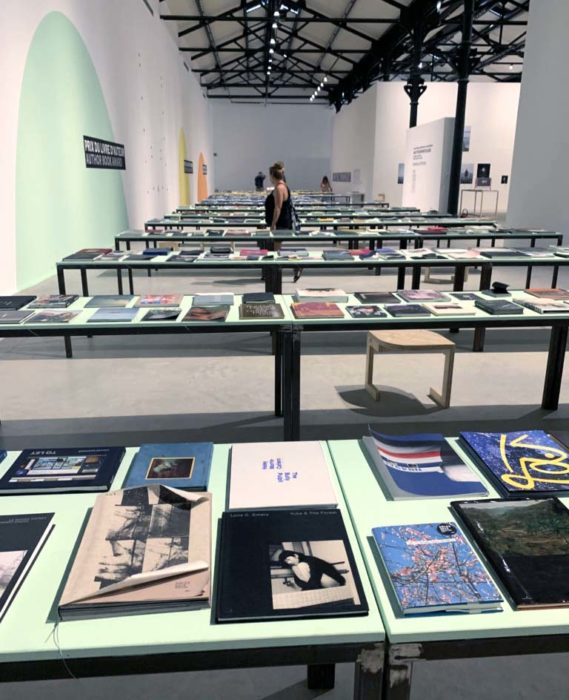
ARLES: Prix du Livre d’Auteur / Author Book Award 1 JULY – 22 SEPTEMBER 2019
Yuka & The Forest is currently on show as part of the 2019 Prix du Livre d’Auteur within the Rencontres d’Arles Book Awards. There are three categories of books: Authors’, Historical and Photo-Text. The Fondation Jan Michalski pour l’Écriture et la Littérature backs and encourages the Photo-Text Book Award, which celebrates the relationship between words and images. Each book is received in two copies: one is deposited at the library of the École Nationale Supérieure de la Photographie d’Arles, the other put on public display throughout the festival period.

‘Rie’ and ‘Yuka & The Forest’ by Lena C. Emery for the Transformation Issue of Whitelies Magazine.

‘Yuka & The Forest’ featured inside the Dec 2018 issue ‘Nature’ of the British Journal of Photography
Emery talks about her latest work, which draws on Japan’s powerful cultural connection to forests.

